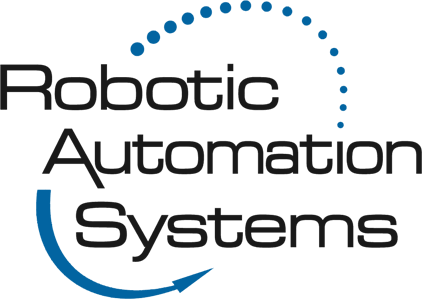Everything You Need to Know About Pick and Place Robots
Everything You Need to Know About Pick and Place Robots
In industrial automation, pick-and-place robots play a crucial role in streamlining production processes. These versatile machines have revolutionized the way items are handled and moved within manufacturing facilities. We will delve into the world of pick-and-place robots, exploring their functionalities, applications, and the benefits they bring to various industries. As always, when you need a team to create the perfect pick-and-place robot for your production line, contact Robotic Automation Systems.
What are Pick and Place Robots?
Pick-and-place robots are a type of robotic system specifically designed to handle and manipulate objects with precision and efficiency. They are commonly employed in assembly lines, warehouses, and logistics centers to perform repetitive tasks, such as picking up items from one location and placing them in another.
Functionality and Feature
Pick and place robots are equipped with advanced technologies and features that enable them to execute their tasks with precision and speed. These robots incorporate vision systems, sensors, and grippers to accurately identify, grasp, and release objects. Vision systems often use cameras to help the robots detect and locate objects within their work environment. The sensors provide feedback on the position and orientation of the objects, ensuring precise manipulation. Grippers, designed for different types of objects, allow the robots to securely pick and place items of varying sizes, shapes, and weights.
Types of Pick and Place Robots
Pick and place robots come in various types and configurations, each suited for specific applications. Some of the most common types are:
Robotic Arm
Robotic arms are the most prevalent type of pick-and-place robots. A 5-axis robotic arm is suitable for standard pick and place tasks, where objects are moved within a single plane. For more complex applications that involve twisting or reorienting objects before placement, a 6-axis robotic arm is utilized.
Cartesian
Cartesian robots operate in multiple planes, moving along three orthogonal axes (X, Y, and Z) using Cartesian coordinates. These robots can be constructed with different types of linear actuators and drive mechanisms, such as belt, ball, or lead screw mechanisms. They generally offer higher positioning accuracy compared to 6-axis robotic arms.
Delta
Delta robots are often employed in scenarios where items need to be picked in groups and placed in specific assembly patterns or containers. Equipped with advanced vision technologies, Delta robots can discern various sizes, shapes, and colors. Most Delta robots consist of three arms operating on four axes, with heavy motors attached to a frame and lightweight arms connected to linking rods with joints, typically ball joints, allowing for movement.
Fast Pick
Fast pick robots are ideal for medium- to high-volume applications with high-velocity stock-keeping units (SKUs). These robots fully automate the picking process, freeing human workers to focus on more impactful tasks. They excel in handling fast-moving items, such as promotional additions or batteries, and can pick up to 300 SKUs per hour from a pool of up to 8 SKUs.
Collaborative
Collaborative robots work with human workers by leading them to pick locations and guiding them through each task. These robots optimize routes in real time, ensuring efficient work and keeping associates on track. By enhancing workflow efficiency, collaborative robots enable associates to work more effectively.
Applications in Various Industries
Pick and place robots find applications across a wide range of industries, contributing to increased efficiency and productivity. In the automotive industry, these robots assemble components, such as placing screws, fasteners, and small parts onto vehicles. In the electronics sector, pick and place robots are employed to handle delicate electronic components during the assembly of circuit boards. They ensure accurate placement and soldering of tiny components, improving product quality and reducing human errors. Additionally, pick-and-place robots play a crucial role in the packaging industry, where they efficiently pick products from conveyor belts and place them into packaging containers, such as boxes or cartons. These robots enable high-speed packaging operations and enhance overall throughput.
Advantages of Pick and Place Robots
Pick-and-place robots have several advantages, some immediately apparent while some show their benefits after successful implementation.
Precision and Accuracy
Pick and place robots offer exceptional precision and accuracy in handling objects, minimizing errors, and reducing product defects. The integration of vision systems and sensors enables them to precisely locate and manipulate items, ensuring consistent results.
Increased Productivity
By automating repetitive tasks, pick and place robots significantly enhance productivity. These robots can operate at high speeds without compromising accuracy or quality, improving production rates and reducing cycle times.
Cost Savings
Implementing pick-and-place robots can lead to cost savings for businesses. These robots eliminate the need for manual labor, reducing labor costs and minimizing the risk of injuries or fatigue-related errors. Moreover, their efficient operations optimize resource utilization, ultimately lowering production costs.
Flexibility and Adaptability
Pick-and-place robots are designed to be versatile and adaptable to different applications. They can handle a variety of objects, from small components to larger items, with ease. The robots can be reprogrammed quickly to accommodate changes in product specifications or production requirements.
Workplace Safety
Pick and place robots improve workplace safety by reducing the need for human workers to engage in repetitive and physically demanding tasks. This eliminates the risk of injuries associated with manual lifting and repetitive motions, promoting a safer and healthier work environment.
Considerations for Implementation
When considering the implementation of pick-and-place robots, several factors should be considered. The selection of the appropriate robot model, grippers, and vision systems should align with the application’s specific requirements. Integration with existing production systems and workflows should be seamless, ensuring minimal disruption to operations. Additionally, proper training and support for the workforce are essential to maximize the benefits of these robots and ensure a smooth transition.
